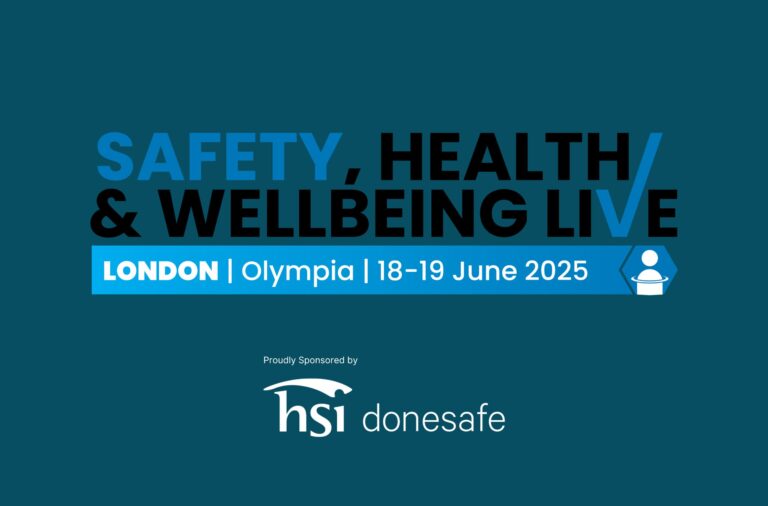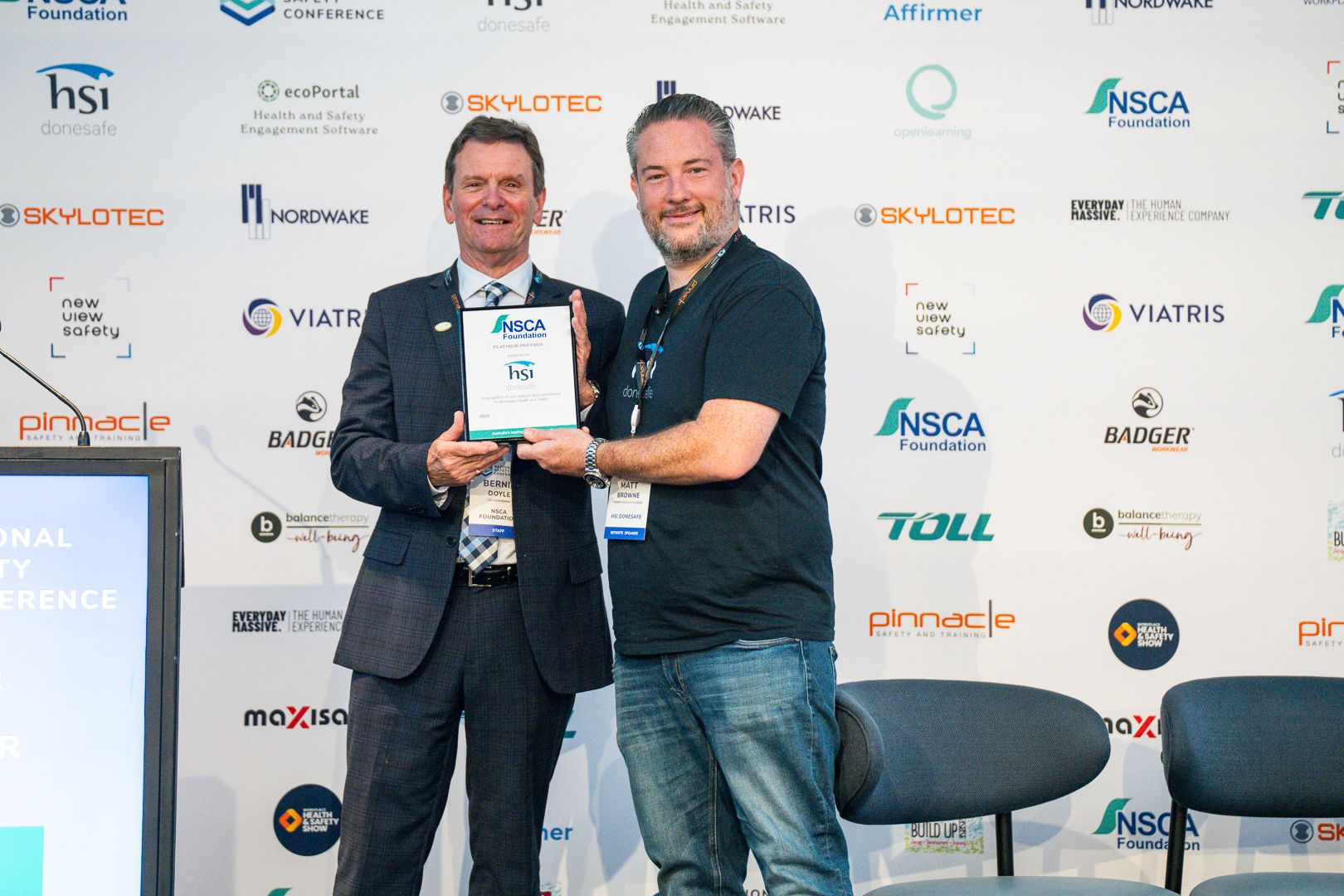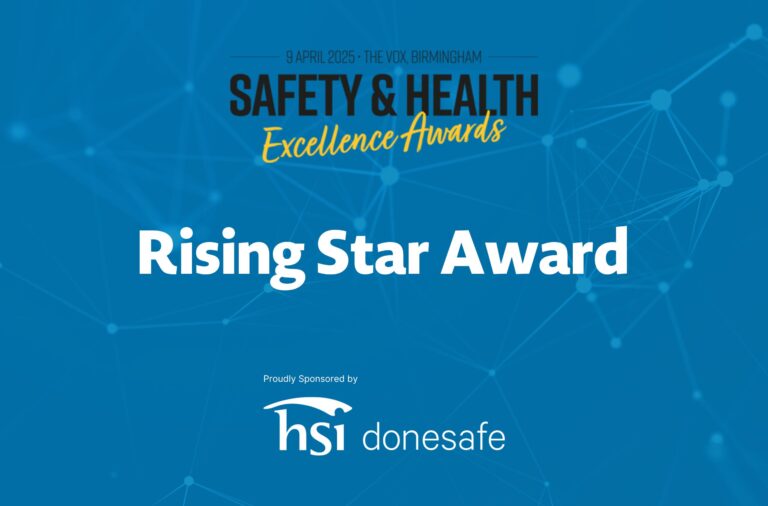
The Donesafe journey – Matthew Browne, CEO & Co-Founder
“The plan was to build a tech-solution with the dream to support professionals globally!”
Matthew Browne, CEO & Co-Founder
The origin of the company began with the need to find a solution to the problems Browne faced as a
safety professional, including the challenge of a technology gap in the market. While working in the
mining industry in Whyalla, South Australia, there were many serious injuries to report on-site. A big
part of the problem was the use of disparate systems, paper-based documents/forms, and several
other components within the organisation’s processes. The use of technology and some key
learnings led to building the platform that is what we and customers around the world recognise
today as Donesafe.
The journey kicked off eight years ago in Sydney, Australia. With over several million users
worldwide, Donesafe is now a global software platform solving some of the most challenging issues
that safety practitioners and their employees face around health and safety. In 2020, Donesafe was
acquired by HSI, a North American Safety Solutions Company, a leader in Environmental Health and
Safety (EHS) software, training, and compliance solutions. With a large customer base in North
America, plus the growth from Donesafe’s 50 employees taking the total employee count to 400+
worldwide, we have solidified our position to support even more customers globally.
Trends and Pain Points in Safety
The trends reported over the last few years have remained quite consistent says Glenn Parker, Vice President Sales at Donesafe. The major pain points have been summarized to highlight the top four key points that stand out in the industry today:
- Lack of time to focus on high-level preventative activities
- Struggle to embed a culture of safety in the fabric of the business
- Safety management technology that does not fit the unique needs of the business
- Difficulty extracting actionable insights from safety data
Safety leaders need to shift their focus to proactive strategies whilst implementing and building a
safety culture within an organisation. Rolling out safety management technology often comes with
issues of having multiple systems, which makes it a challenge to get them to fit a specific
environment. Another relevant aspect of having technology is to obtain real and meaningful insights
to enable focus on preventative and other value-adding activities.
Lack of time to focus on high-level preventative activities
Lack of time is probably due to the fact that in most organisations, the safety team is quite
commonly under-resourced and expected to do more with less. Being under-resourced, and having
leaders often getting pulled into a range of issues, leaves less time to focus on the preventative
activities they are not always able to manage by exception, and results in an overwhelming scenario.
Lack of delegation can be an issue for some cultures where the ownership for triaging issues,
incidents, and hazards often doesn’t sit with managers, and safety teams have to pick up that slack.
Hence their ability to focus on preventative elements, like coaching programs, introducing new
controls, initiatives, and so on, is often reduced.
To remain agile, it is pertinent to have a good collaborative approach between corporate governance and clinical governance which was one of the challenges faced by Aged Care providers.
Noted by – Alison De Araugo, Head of Health Safety & Wellbeing, Estia Health
With the impact of COVID, the changes in workforces from a direct employee model to a contractor
model needed greater agility and came with technological challenges, and this affected the speed of
strategic execution as experienced by various organisations during the pandemic. This has created a
need to look into the appropriate technological solutions available now to enhance the ability to
manage these situations in the future. The past 12 months have witnessed a big shift in the way that
people work, and that has introduced new risks and new environments for many workers. As a
health and safety professional, it’s how you manage and prioritise those areas that are the most
important to the business. Technology that helps you understand the high-value items, whether it’s
a high-risk incident or not, requires addressing the key activities and getting the system to work for
you. There is more focus around automation and pre-scheduling events, which eliminates the need
to think about the day-to-day elements of workplace assessments for working from home, or
managing infectious disease tracking within the work environment. All of those elements have a
technology framework that removes the administrative work, and gives companies the reporting
tools they need to be able to keep people informed along the way, whether it’s at a worker level on
issues they encounter, and how they are tracking in terms of the triage and workflows; or at a higher
level in terms of management input.
At Donesafe, one of the focus areas is helping through technology in a platform and enabling the automation that helps organizations identify the key issues and key points at any point in time.
During the pandemic, organisations quickly resorted to the use of temperature scanning, and looked
at social distancing, for instance, using AI. We are starting to see the use of technology such as
sensors and thermal imaging, to benefit the health and safety of employees, both to manage the
crisis and to engrain AI into the OHS culture. A host of digitisation measures are eliminating manual
forms, replacing them with electronic ones. Companies, however, differ in terms of where they are
at, in their stage of the journey. Another area of struggle to which safety professionals often refer is
getting engagement from a cultural perspective. Some industries, such as mining, do this well, as
safety is embedded into their DNA, but many other sectors struggle with it. To bring new technology
into the hands of a diverse group, and make it usable and accessible, is truly a task that requires an
increased level of effort. And where that does not happen, the engagement with the technology
platform, and compliance framework, tend to suffer.
Andy Lewis, Director, WHS Australia comments that an interesting observation among safety
professionals and risk managers is that they do not market compliance well. One of his first actions
going into struggling businesses that weren’t achieving buy-in with technology was getting the
marketing or brand team to work with the Safety team to help create messaging that enabled
people to work better. It needs to be ingrained into the culture and this depends on how you market
the change. Safety managers then work like change managers and reiterate how technology is an
important enabler for safety in their jobs, and how embracing the new ways of working can make
life much easier. Companies such as Wood have begun utilising a variety of technologies in safety
management, from RealWear headsets to predictive analytics.
Safety management technology
“I’ve had the opportunity to work with a wide variety of companies across a range of geographies
and sectors and they all tackle it in different ways”, notes Bruno Andrade, Enterprise Account
Manager, Donesafe. “Forgoing the idea of saving time and focusing on the key issues. Knowing the
audience, knowing the frontline workers, is of paramount importance. Understanding how they
interact with safety systems is the first step in engaging staff more effectively. Frontline workers are
constantly juggling different priorities. Companies that tap into leveraging technology and using
smart tools to capture the hearts and minds of frontline workers with a user-friendly interface, can
help those workers to maintain focus.” While a return to shareholders is important, safety and risk
management is equally important. Having a tool that is easy to use allows workers to enter and exit
the platform quickly. Thinking about communication as a two-way street goes a long way towards
maintaining an open and collaborative approach to achieving the right outcomes. In the corporate
world, obtaining reports is a basic requirement. Also vital, however, is the sharing of data back to the
frontline as feedback on their safety indicators or KPIs, providing them with regular intel on
indicators trends for the past month, quarter or year. Delivering to workers a means by which they
can regularly access such information, fosters ownership.
It’s also a case of striking an iron while it’s hot. If someone is reporting on an event, having a tool
that will communicate back to them what that reporting means to the organisation, or the impact of
that dataset on the organisation, will cement the importance of that action. As an example, the
employee gets a message back via their mobile, saying “The event reported represents 47% of injury
injuries cases for the last year. Thanks for keeping your colleagues safe”. This type of active two-way
communication in real-time helps with engagement. Often missed in the discussion is the fact that
the technology’s design is key to that engagement. A good design can support engagement both at
the worker level, by making it quick and easy for them to report an event, and also at management
level, using technology to hold management accountable and to maintain interaction with their
workers based on what’s being reported.
Often, big investments made in technology are not just the cost of the license or the system, but also
a combination of other costs associated with embedding the technology into the organisation’s
framework – change management, branding, and so on. Change is constant, and we witnessed
dramatic changes this year with COVID-19. Technology can support not only unique needs from
industry to industry but also diversified needs within the same industry sector. The
Telecommunication sector is a prime example. Major Telco players in Australia had different ways of
managing contractors, events and incidents. With the existing multiple safety systems, all the
platforms or technology elements will need to interact and mix with legacy systems to the cloud,
and mobility. Technology, therefore, needs to be able to support these unique requirements.
“We had to work quickly to try and mobilise a quite large, diverse workforce, as well as our contractbased and international workforce”, said Nancy Abdelnour, Principal, Health Management,
Rehabilitation and Workers Compensation. “We found Donesafe to be a really simple platform for
us to leverage off, especially in the areas of our communications; pushing out communication, key
critical compliance-based activities, as well as other activities and initiatives that we wanted our
people and leaders to participate in. That ensured that we had all the key critical areas in front of
mind and focused on by our people whether that was to do with COVID-safe changes, jurisdictional
changes, different requirements across different states that we needed to adhere to so we could
target messages, targeted communications, push it out relatively quickly to people, depending on
where they were. This enabled them to be up to date with what was relevant and pressing for them
while keeping it simple. We had to think about our end-user experience by not giving people pages
and pages of questions to complete. Anything completed quickly and en masse is challenging but
having a solid tech platform to work off definitely made life significantly easier for us.”
Donesafe also had a leading response on COVID in terms of infectious disease management, and the
Telstra team built a module on their platform that they kindly donated to Donesafe to be able to
remanufacture and push out to their clients for free. The fact that Telstra was able to generate that
within a matter of days was an impressive achievement. This enabled working closely with contact
tracing, working together to make sure that people who got tested, and were waiting on results,
could be monitored. It had implications on how to support them on the work front, with regards to
their returning to work, but also on making sure that they had adequate support if they tested
positive to COVID. The systems helped support people in focusing on their health, recovery and
monitoring, which is critical at this time. This greatly enhanced the efficiency of OHS work at Telstra,
especially at the peak of the pandemic.
Some businesses spend millions of dollars on a platform alone, only to have it end up clunky and
adding no value. The IT team must be involved when dealing with legacy programs. When looking at
out-of-the-box solutions versus bespoke, people see the former as one that has been tried and
tested. However, it’s not always fit for purpose, and that’s where a lot of organisations get caught
out. With Donesafe, organisations can customise the rollout to allow their people to become
accustomed to the idea of new technology that will enable them, that will position the businesses to
move forward, and take them on the journey.
Actionable insights – The game changer
Glenn Parker, Vice President Sales, Donesafe says, “There’s the age-old story of a safety manager
complaining of spending three days with their head buried in spreadsheets and manually adjusting
incident data. Today we can obtain insights from technology systems you own and use – actionable
insights from the safety data you are collecting.”
Obtaining insights relies not only on the admin element of getting reports out of the system but also
on other elements, such as those around engagement and under-reporting. In one area, McDonald’s
was getting around 5,000 incidents reported annually through their stores and franchisees. When
Donesafe put in the new system, they were able to increase that four-fold to around 20,000
incidents. McDonald’s thought slips, trips and falls were their biggest issues, however, they found
that those numbers increased only because they were easier to report. They subsequently found
that burns, from the serious down to the relatively minor, were actually the leading incidents. They
just hadn’t been previously reported in large volumes. The Donesafe system gave Mcdonald’s new
insights into what was causing those burns, identifying faulty toasters, and an un-optimised toasting
process as the causes. Mcdonald’s replaced all their toasters, and this resulted in a significant
reduction in burn incidents. This shows that obtaining insights relies not only on analytics and
business intelligence reporting but often also on engagement, this last bringing new elements into
the reporting. The real value is that it gives you the ability to monitor the quality of the data in real
time. Real-time reporting results in a shift, not only in reporting, but also in the culture of the
organisation, and in the engagement of both workers and leaders
Companies focus centrally on risk, this being at the core of much of what they do. Audits, checklists,
critical controls, incidents, hazards, and so on, are all linked back to the risk framework. Some of the
new predictive analytics tell you what incidents might occur in the future based on past data,
although that level of intel generation is still in its embryonic state. There are some core insights you
can easily obtain by linking data together, and also by knowing they have Donesafe systems capable
of managing the other elements, such as risk, contractor management, or learning.
About Donesafe
Donesafe is the fastest growing cloud-based safety platform built with the user in mind, helping
organisations comply with legislation, and enhancing their safety culture without the headaches or
the large price tag. The #1 safety, compliance and risk platform – pick and choose from over 30 apps
to create a fit-for-purpose solution perfect for your organisation! Donesafe is innovative software
that connects your system, from workers in the field to the management team in the boardroom.
Donesafe makes it fast and easy to access, enter, and report safety, compliance and risk data in realtime. Donesafe is a modern and fresh online platform that works on any device and provides offline
native iOS and Android apps. With major clients including McDonald’s, NAB, Brickworks, State of
California, IAG, Audi and Telstra, Donesafe is quickly becoming one of the most well-known software
names for both the SME and Enterprise markets.
Website: www.donesafe.com
Details of the speakers
Glenn Parker, Vice President Sales, Donesafe
Glenn is an experienced Managing Director and Sales Leader with a background and speciality in the
management of B2B software firms. Significant depth of business and investment experience,
particularly in the areas of repeatedly producing sustained revenue and EBIT growth in difficult and
changing markets. Personable, pragmatic, resilient, and hard-working, with extensive experience in
leading and motivating regional teams. Highly successful in building high-performance cultures,
strategic M&A, seizing control of problem areas, and delivering on customer commitments.
Matthew Browne, CEO & Co-Founder, Donesafe
Matt is CEO & Co-Founder of Donesafe, a market-leading global EHS SaaS start-up with 1.5million+
paying users. Matt took the business from launch in 2013, to exit with the acquisition by HSI in 2020.
He is Co-Founder and Advisor of Whispli, a Y-combinator alumni SaaS start-up for safe and secure
anonymous whistleblowing, with clients including Westpac, Qantas, EY, Oxfam and Fairfax Media.
He is a Venture Partner at Antler and has mentored 100s of start-ups through the Founders Institute,
BNG Nebula, and Antler programs. Over the past decade, Matt has experienced every stage of the
start-up entrepreneur lifecycle, from inception and launch to funding and exit. Matt is on a mission
to build greater technology literacy and to drive change in the way in which Australia exports. Matt
dreams of a day when tech export revenue exceeds that of minerals. He also holds a passion for
ensuring that minorities don’t get left behind, and has invested in Goanna Solutions, an indigenous-owned technology company with a social mission of providing technical literacy to indigenous Australians and minorities. As Managing Partner at Black Nova Group, Matt oversees the
qualification, proposal, and selection of all start-ups entering the Black Nova portfolio, as well as
ensuring our continued growth by leveraging his extensive network, experience and determination
to make a positive impact through partnerships, in the Australian and international start-up
ecosystem.
Share:



